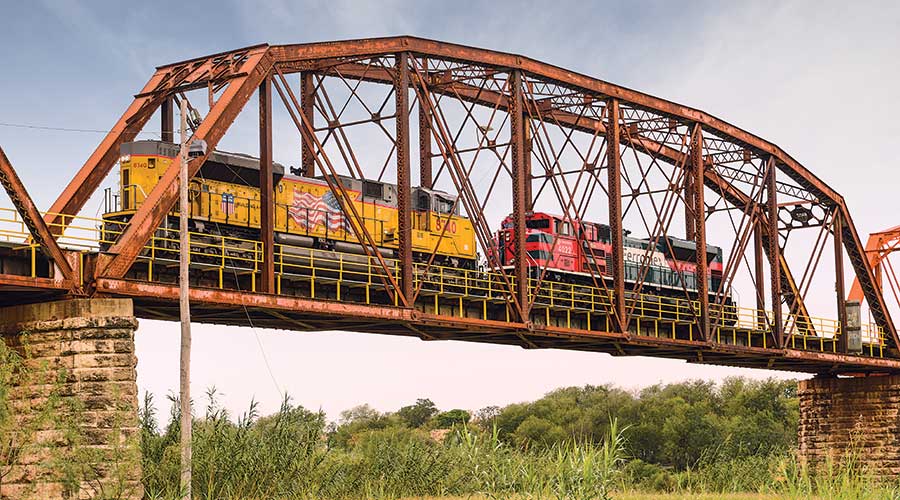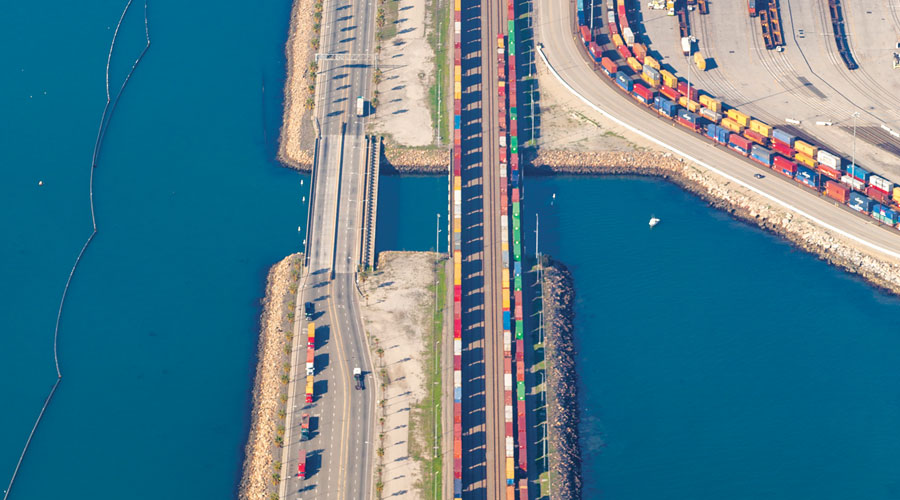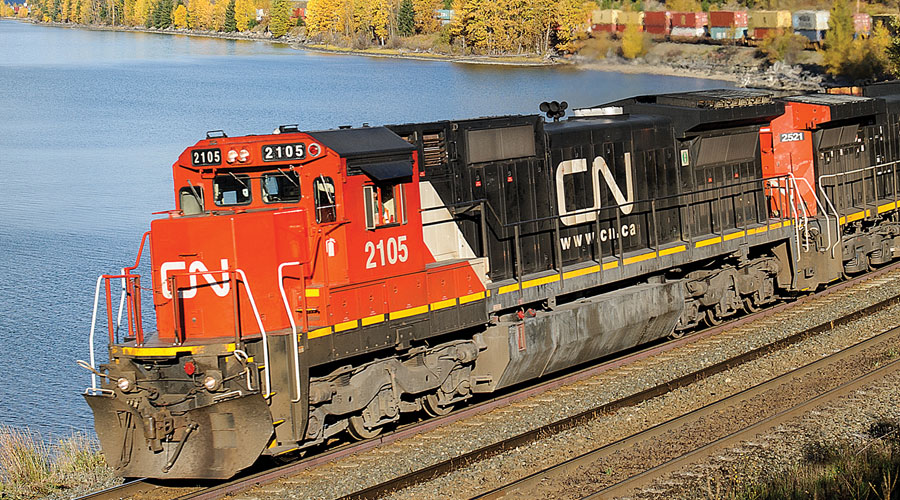Stay updated on news, articles and information for the rail industry
September 2014
Rail News: Intermodal
Rail intermodal: A compelling, yet complicated second quarter
— by Jeff Stagl, Managing Editor
After registering a marginal first-quarter gain of 2.6 percent, North American intermodal volume rose a robust 8.2 percent in the second quarter — the highest quarterly growth rate in three years.
Volume reached 4,173,329 units versus 3,855,581 units in second-quarter 2013, according to the Intermodal Association of North America (IANA). On a year-over-year basis, domestic container volume climbed 7.6 percent to 1,632,802 units, total domestic equipment volume rose 6.9 percent to 2,047,159 units, trailer volume increased 4.3 percent to 414,357 units and international container volume jumped 9.6 percent to 2,126,170 units.
Essentially, four factors helped drive up domestic volume in the quarter: highway congestion/truck capacity issues, ongoing effects from truckers' tightened hours-of-service regulations, the economic uptick and a recovery from severe winter weather, says IANA President and Chief Executive Officer Joni Casey. In addition, international volume received a boost from retailers that imported some holiday season merchandise earlier than normal due to concerns about a potential labor action at West Coast ports stemming from lingering contract talks between the Pacific Maritime Association and International Longshore and Warehouse Union, she says.
"You can't really say one of the factors had more influence than the others on volumes. They were all rolled into one," says Casey.
However, Q2's high growth rate might overstate intermodal's underlying strength, since it came on the heels of unimpressive volumes in Q1. Harsh winter weather likely played a role in dragging down domestic shipments and delaying some Q1 movements until Q2, says Casey, adding that it's difficult to measure the weather's magnitude on volumes.
First-half statistics provide a somewhat clearer picture of intermodal traffic. Total volume rose 5.5 percent, slightly less than the 5.8 percent increase recorded in second-half 2013, but in line with recent intermodal trends, says Casey. By far, consistently strong domestic container traffic has been the primary trend, she says.
How things shake out in Q3 will be vital in determining if domestic container demand, industrial production, consumer spending and other trends hold, says Casey. The West Coast longshoremen's contract negotiations will be something to monitor, as well.
"The parties are talking and so far there have been no talks of stopping cargo," says Casey.
In Q4, a development worth watching will be the peak season, which runs from late August into December. Casey believes retailers' pre-shipping efforts in Q2 and Q3 to avoid potential port disruptions might cause a more muted peak versus prior years.
If the various indicators and factors prove favorable to intermodal in the year's second half, annual volume growth likely will meet or exceed IANA's projected 4.6 percent gain for 2014, she says.
For 2015, the association is forecasting domestic volume growth of 6 percent to 8 percent and international volume growth of 3 percent to 5 percent. A continuation of intermodal conversions, decreases in length of haul — which open up new markets — and strides toward returning international volume to a pre-recession peak will help the industry realize those growth rates, says Casey.
"It's too early to tell whether some of the factors influencing intermodal business are the norm or anomalies," she says. "But if the past is a good predictor of the future, intermodal should continue as the fastest-growing surface transportation mode."


 2025 MOW Spending Report: Passenger-rail programs
2025 MOW Spending Report: Passenger-rail programs
 Gardner steps down as Amtrak CEO
Gardner steps down as Amtrak CEO
 Guest comment: Oliver Wyman’s David Hunt
Guest comment: Oliver Wyman’s David Hunt
 Women of Influence in Rail eBook
Women of Influence in Rail eBook
 railPrime
railPrime








